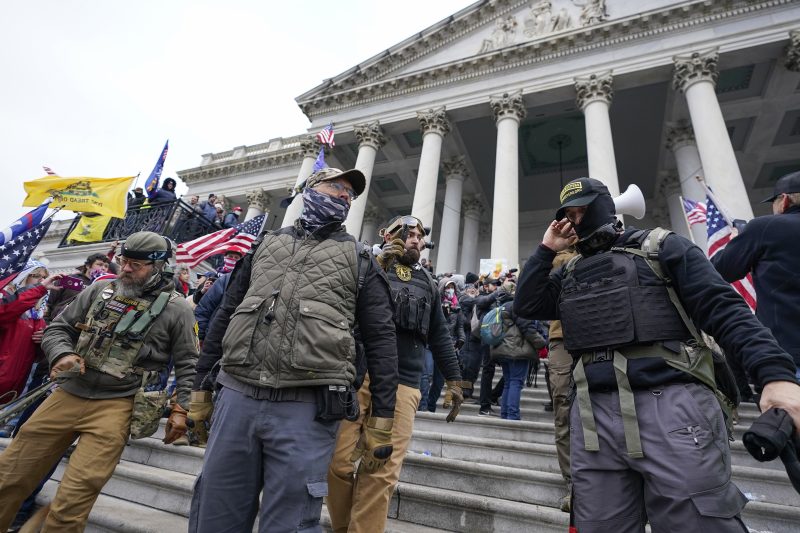In early February 1942, Attorney General Francis Biddle gave a speech before the Brooklyn Bar Association. The nation was newly at war, the attack on Pearl Harbor having occurred less than two months prior. The question at hand, then, was how the country might protect itself against internal threats.
“Traditionally America has always avoided the use of sedition laws,” Biddle explained to his audience. “We have believed that they express the use of star chamber methods which we have always disliked — the persecution by the sovereign of opinions not palatable to sovereignty.”
War changes the picture, he admitted. But he expressed confidence that interring “alien enemies” would backfire. There would, he said, be “many million Americans of German and Italian origin in our population who would be deeply shocked by and resentful of such treatment.”
Two weeks after he gave that speech, Biddle’s boss, President Franklin D. Roosevelt, signed an executive order forcing the internment of tens of thousands of people of Japanese ancestry. Biddle had mentioned that “tempers and dangers are highest” on the West Coast, but, 80 years later, it’s hard not to recognize the racial subtext.
The attorney general was right that the government doesn’t often level charges of sedition or seditious conspiracy against perceived opponents. That members of the far-right extremist group Oath Keepers faced such charges in the wake of the U.S. Capitol riot was a rare exception to that rule. But that two were convicted also highlights the other rarity at play, the one that overlaps with the subtext in 1942: There may not have been a conviction of White right-wing actors on such charges since the aftermath of the Civil War.
There have been convictions. A lengthy terrorism trial in the early 1990s resulted in the conviction of a group of Muslim men on charges of seditious conspiracy, among other things. Groups of Puerto Rican activists have been targeted on more than one occasion. In the early 1950s, for example, members of a group that plotted to assassinate Harry S. Truman were convicted on the same charge.
Then there were the indictments obtained during the administration of Ronald Reagan. In 1988, the New York Times noted that the Justice Department was “dust[ing] off an old law” — seditious conspiracy — to target violent actors. It mentioned various convictions of Puerto Rican nationalist groups, with an attorney for some of those targeted proclaiming that the law was used as “a way to criminalize political organizations” — unintentionally echoing Biddle’s concerns in 1942. The Times article also mentioned new charges targeting organizations on both the political left and the right. On the left, the paper wrote, the federal government was prosecuting members of a Marxist group called United Freedom Front. On the right, the target was alleged members of white supremacist organizations in Arkansas.
The trial in Arkansas resulted in acquittals across the board — by an all-White jury, as The Washington Post’s story at the time noted in its first sentence. The prosecutions of the United Freedom Front splintered, with one alleged member, Christopher E. King, pleading guilty to a seditious conspiracy charge. Other members of the group saw charges dropped, often because they were already in prison. Three others went to trial, with a jury acquitting them on sedition charges and being hung on other charges of racketeering and conspiracy.
The Justice Department under President Barack Obama obtained indictments for seditious conspiracy against a right-wing group called the Hutaree, alleging that the Michigan-based group had aimed to attack law enforcement as part of a plot to attack the U.S. government. Those charges, too, resulted in acquittal.
Following the terrorist attacks of Sept. 11, 2001, more than 20 people have faced seditious conspiracy charges related to alleged terrorism plots. Two members of a Portland, Ore., group pleaded guilty in 2003 to seditious conspiracy charges after plotting to travel to Afghanistan to fight alongside al-Qaeda and the Taliban, for example. Two years later, the government obtained indictments against another group of al-Qaeda sympathizers, with two pleading guilty to seditious conspiracy. All four men in those two cases were Black. Of the 21 defendants charged with seditious conspiracy in the post-9/11 period, according to a database from the Intercept, only one, Randall Todd Royer, is White. He pleaded guilty to other charges.
At the time Biddle spoke in 1942, there was a recent example of seditious conspiracy to which an observer might point: the effort to prosecute members of the right-wing, pro-Nazi Christian Front in 1940. Nine of those accused of plotting to overthrow the government were acquitted at trial, to the glee of right-wing radio broadcaster and priest Father Charles Coughlin. Five others saw their prosecutions end in mistrial.
It’s certainly fraught to extrapolate outward from a relatively small number of cases to broader trends. But there are certainly echoes of past indictments in the efforts of Oath Keeper founder Stewart Rhodes and Florida chapter leader Kelly Meggs on Jan. 6, 2021. The group had been planning to backstop Donald Trump’s presidency well before that date became a focus. Unlike other groups that faced seditious conspiracy charges, of course, Rhodes and Meggs were engaged in the effort to disrupt the government, participating in the events on Capitol Hill on Jan. 6.
Part of their defense was an argument that Francis Biddle might have recognized: They were being persecuted for their political beliefs. The jury was not convinced.

